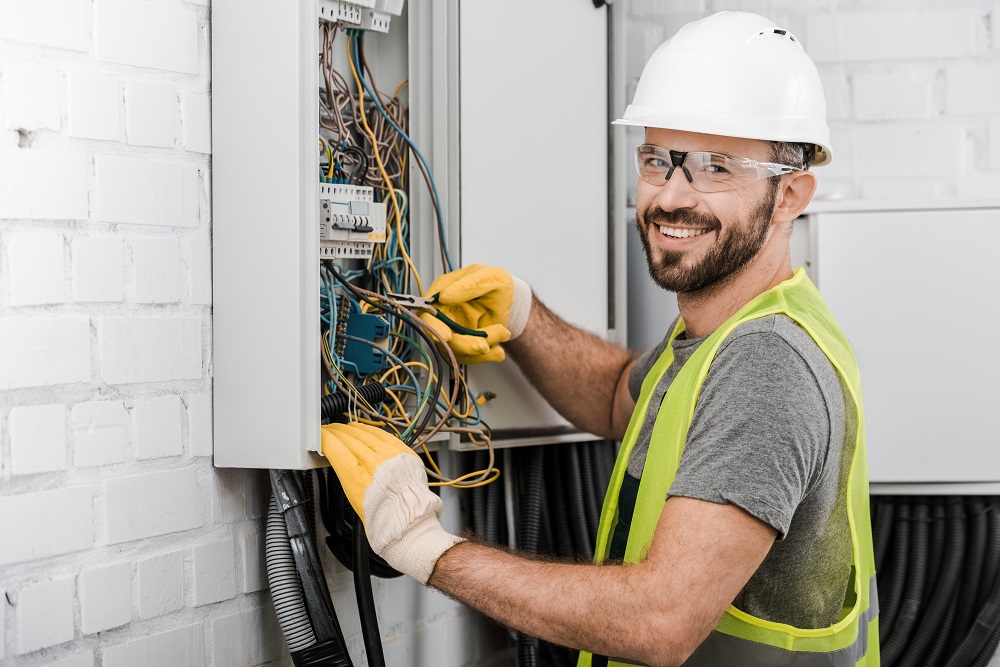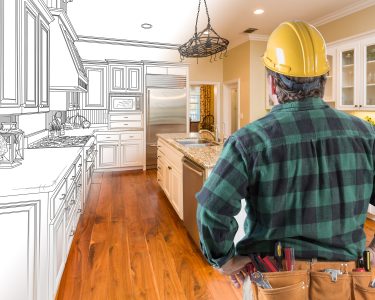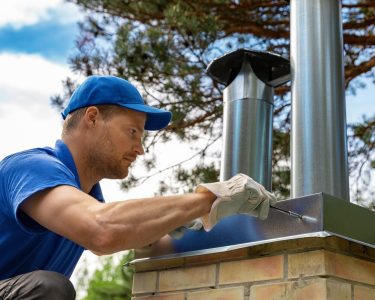Commercial electrical installations need the right planning and execution. It’s imperative. Commercial setups involve larger loads, more complex systems, and higher regulatory standards. That makes them easier, and more dangerous, to get wrong.
A single mistake can impact safety, performance, and profitability. These errors can lead to electrical fires, equipment failure, business disruptions, or failed inspections. In some cases, they may even put human lives at risk.
Mistakes in the planning and installation process can cause long-term damage. Often, that damage is far more expensive and difficult to fix than doing the job right the first time. Let’s look at some of the most common mistakes in commercial electrical installations. We’ll also talk about how to avoid them.
What Are Commercial Electrical Installations?
Commercial electrical installations refer to the setup, wiring, and configuration of electrical systems in business and industrial buildings. These systems must meet local codes, support large-scale equipment, and allow for energy-efficient performance and future expansion.
In commercial environments, electrical systems do much more than power lights and outlets. They serve critical functions across entire operations. HVAC systems, machinery, data networks, security systems, and emergency power supplies all depend on them.
Commercial electrical installations have higher voltages and more demanding loads than residential ones. That’s why precision and planning right from the start are so important.
The lack of that precision and planning can lead to serious consequences. Faulty wiring or misconfigured panels can overload circuits or shut down essential systems.
A mistake in a residential home might trip a breaker. In a commercial electrical installation, it can halt production, compromise employee safety, or cause a building-wide outage. Those things are inconvenient, sure. But for a business, these disruptions can cause lost revenue or damaged inventory. They also might lead to customer dissatisfaction or reputational harm.
A well-executed commercial electrical installation ensures long-term safety, reliability, and code compliance.
Why Do Mistakes Happen in Commercial Electrical Projects?
Mistakes occur when contractors cut corners, miscalculate load requirements, or overlook safety protocols. The complexity of commercial systems makes them more vulnerable to planning and execution errors.
Commercial electrical projects aren’t simple. They involve coordinating high-voltage power distribution, integrating advanced systems, and complying with strict electrical codes.
When many contractors are involved, errors can slip through the cracks.
Several factors commonly lead to mistakes:
- Inadequate planning: Systems are often undersized or poorly distributed without the right planning. This can result in overloaded circuits, unexpected failures, and costly redesigns mid-project.
- Unlicensed or underqualified labor: Commercial electrical work requires specialized knowledge. Unqualified workers may overlook essential safety measures or install systems incorrectly. That can lead to dangerous conditions or code violations.
- Miscommunication: On large jobs, the electrical team must coordinate with architects, HVAC technicians, and general contractors. Poor communication can result in incompatible layouts, missed system requirements, or duplicated work.
- Rushed timelines: When deadlines are unrealistic or poorly managed, quality often suffers. Electricians may skip testing, omit safety checks, or fail to document their work thoroughly. All these things increase the risk of failure after installation.
- Neglecting code or permits: Electrical codes change frequently. Contractors who aren’t current with local regulations may install noncompliant systems. If that happens, it can lead to failed inspections, fines, or forced rework.
Even small mistakes can lead to cascading failures that affect productivity, profitability, and safety. Preventing these issues requires an understanding of commercial systems, attention to detail, and a commitment to doing the job right.
Top 7 Mistakes in Commercial Electrical Installations
Avoiding costly electrical issues starts with knowing what to watch for. The following are the most common mistakes found in commercial electrical installations:
1. Improper Load Calculations
Load calculations determine how much electrical power a building needs. If they’re inaccurate, systems may become overloaded. Equipment failure, outages, or fire hazards can occur in overloaded systems.
Any commercial electrical design is built on load calculations. They involve measuring the total electrical demand of all devices, lighting, HVAC systems, and machinery that will operate in the building.
These calculations inform the sizing of electrical panels, circuit breakers, wiring, and transformers. They’re necessary to make sure the system can handle the building’s electrical loads.
If they’re done incorrectly, or not at all, the consequences can be severe. Undersized systems may overheat, trip frequently, or damage equipment.
In facilities that rely on constant uptime, those failures can halt operations and pose serious safety risks. Over time, the strain on the system also increases the likelihood of fire, component degradation, and unplanned outages.
2. Code Non-Compliance
Non-compliance with electrical code can lead to failed inspections, legal penalties, system hazards, and delays in opening or operating a business.
Electrical codes are updated regularly. They’re always taking new technologies, safety standards, and efficiency goals into account. Commercial projects that don’t meet these codes can’t pass inspection. They may be legally barred from opening or continuing operations.
Non-compliant installations also make fires, equipment failure, or insurance claim denials more likely. Contractors unfamiliar with local requirements or rushing through installations put the entire project at risk.
Ensuring compliance from the beginning helps avoid costly corrections. It also builds a foundation of safety and reliability.
3. Low-Quality Wiring and Connections
Low-grade wiring and poor connections increase the risk of electrical failure, overheating, power loss, and fire.
Commercial properties often need high-voltage wiring and continuous electrical flow. Poor-quality conductors, mismatched wire gauges, or poorly executed connections can lead to overheating, arc faults, and dangerous wear.
Substandard materials are more likely to corrode, break down, or fail under high loads. That puts systems and people at risk. Commercial properties where systems are often hidden behind walls, ceilings, or machinery take on more of that risk.
Failures may go undetected until damage has already occurred. If that happens, costly repairs, code violations, or worse, fires that threaten people and property are on the table.
4. Poor Lighting Design
A poor lighting design can create safety hazards, reduce productivity, and lead to higher energy costs in commercial spaces.
Lighting in a commercial environment isn’t just about visibility. It plays a key role in workplace safety, employee performance, and customer experience. Each setting has unique lighting needs based on its layout, usage patterns, and regulatory requirements.
When lighting is poorly designed, it can cause eye strain, increase the risk of accidents, and lead to user discomfort.
There are also long-term operational costs to consider. Bad lighting design can be energy inefficient, which leads to higher energy bills and wear on the fixtures.
A properly designed lighting system uses the right fixtures, placement, brightness levels, and controls.
5. Lack of Maintenance Planning
Skipping preventative maintenance leads to faster system degradation, unexpected failures, safety hazards, and costly emergency repairs.
Even high-quality installations degrade over time. Dust, vibration, and regular use slowly wear down connections, panels, and equipment.
Without scheduled inspections, small issues go unnoticed until they become critical. A maintenance plan helps identify these issues before they cause disruptions or hazards.
In places like hospitals, manufacturing plants, and data centers, even a brief outage can throw a huge wrench in operations. Lack of maintenance also increases the risk of code violations and insurance claim denials, especially if equipment fails and there’s no service history.
A scheduled maintenance plan is not just a precaution. It saves costs and helps extend system lifespan, reduce liability, and ensure consistent uptime.
6. Faulty Generator Integration
Improper generator installation can result in power loss, equipment damage, or dangerous backfeeding into the utility grid during an outage.
Generators are critical for maintaining operations during power interruptions, but they must be integrated correctly. That means selecting the right generator size, installing a transfer switch, and making sure it’s compatible with the building’s load requirements.
A generator that’s too small won’t support all essential systems, leading to selective failures or total shutdowns. Without a properly installed automatic transfer switch, there’s a risk of backfeeding, where electricity flows from the generator into the public grid. That’s both illegal and dangerous.
Poor generator planning can also result in delays during emergencies. The system could fail to start, switches power unevenly, or overload critical circuits. A professionally integrated generator ensures safe transitions and reliable backup power.
7. Overlooking Security and Data Systems
Overlooking security, data, and low-voltage systems during electrical planning leads to expensive retrofits, system conflicts, and operational inefficiencies.
Modern commercial buildings rely on more than just power delivery. They depend on integrated systems for internet connectivity, access control, surveillance, and communication. These systems often need structured cabling, dedicated circuits, and specific layout considerations.
When these low-voltage needs aren’t included in the initial electrical design, contractors may be forced to retrofit solutions after walls are closed and systems are energized. This increases labor and material costs. It can also disrupt business operations and compromise system performance.
Late-stage integration may create interference between systems. That can result in improper equipment placement or force reliance on less secure or stable alternatives. Businesses should plan for high- and low-voltage systems together. Doing so ensures smoother installation, cleaner infrastructure, and a more future-ready facility.
How Can You Avoid These Common Mistakes?
Hire Certified Commercial Electricians
Certified commercial electricians have the training, licensing, and experience required to handle complex systems, follow evolving codes, and plan for long-term performance. Working with a qualified professional helps installations pass inspection, function reliably, and reduces the likelihood of failure or liability.
Focus on Custom Planning and Load Analysis
A thorough walkthrough and needs assessment should come before the first wire is installed. This includes accurate load calculations, layout reviews based on equipment placement, coordination with other systems, and proper permitting.
Early planning reduces the chance of error and supports future growth.
Invest in Quality Materials and Future-Proof Designs
Commercial-grade panels, conductors, lighting, and control systems are built for durability and safety. Future-proofing with scalable infrastructure and support for new technologies helps businesses avoid costly upgrades and maintain compliance over time.
FAQs About Commercial Electrical Installations
What’s the difference between residential and commercial electrical work?
Commercial systems are designed for higher voltage, greater loads, and more complex infrastructure than residential systems. They often power large equipment, integrate data and security systems, and must meet stricter building codes.
Installation also typically involves load balancing, emergency backup systems, and multi-phase wiring.
How often should commercial electrical systems be inspected?
Most commercial systems should be professionally inspected at least once a year. Routine inspections help detect early signs of wear, overheating, or code violations.
Do I need permits for electrical upgrades in my commercial building?
Yes, permits are required for most commercial electrical installations. Projects like panel replacements, circuit extensions, generator installations, or full system rewiring typically need approval from the local building authority.
Key Takeaways
- Commercial electrical systems must be planned and installed by qualified professionals.
- Common mistakes include poor load calculations, code violations, and substandard wiring.
- Improper installations can lead to fires, outages, equipment damage, and safety hazards.
- Routine maintenance is essential to prevent long-term system failure.
- Planning for future needs—like EV chargers and data systems—helps protect your investment.
Building It Right from the Start
Commercial electrical installations are too important and complex to leave room for error. Every detail, from power reliability to safety and scalability, matters.
The best way to avoid the most common pitfalls is to work with experienced professionals. They should understand the demands of commercial environments and take a proactive approach to planning and execution.
Whether you’re upgrading an existing system or starting from the ground up, smart decisions today lead to safer, more efficient operations tomorrow.





